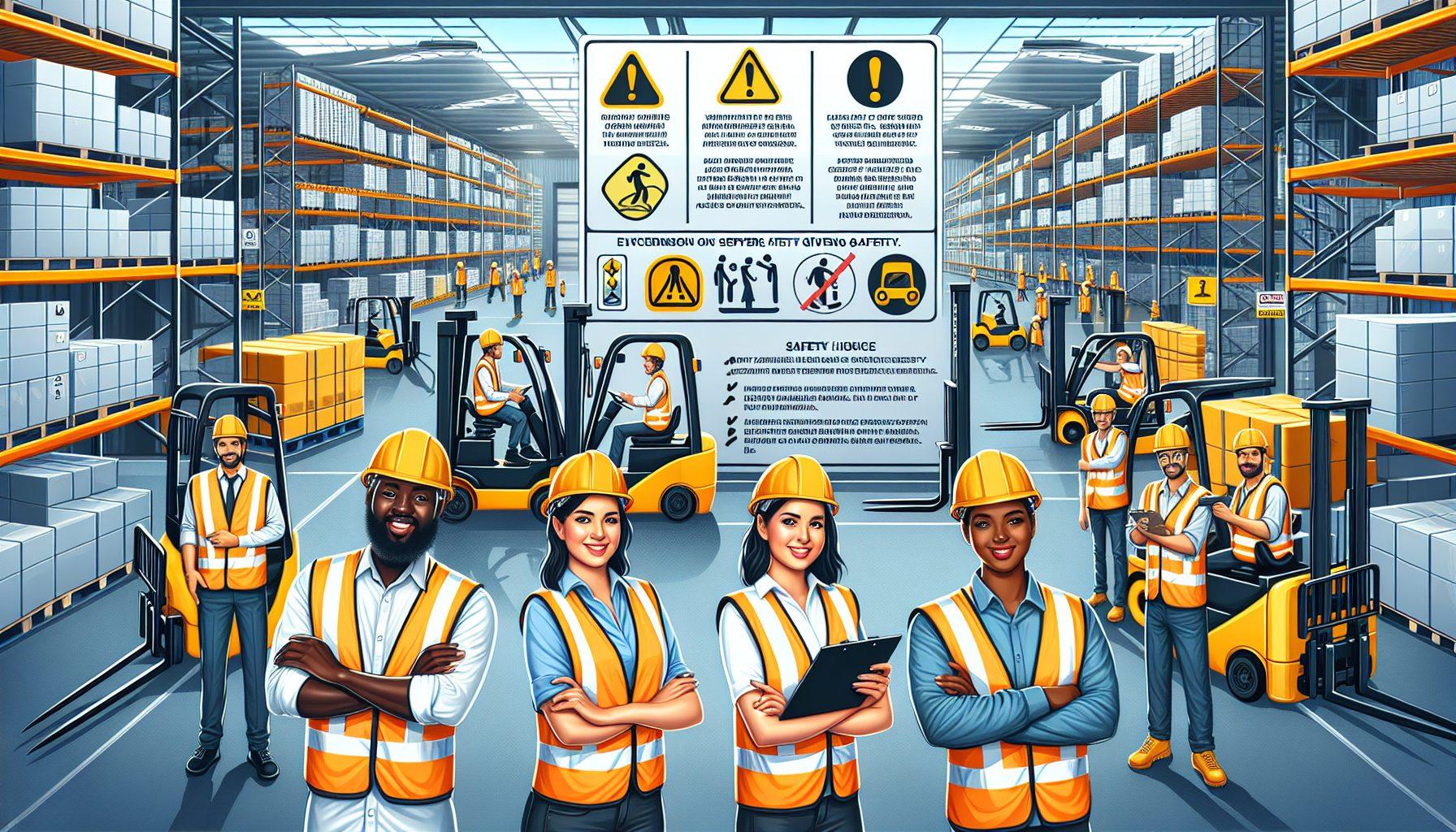Creating a culture of safety is essential in reducing PIT (Powered Industrial Truck) accidents in warehouses. With the fast-paced and dynamic nature of warehouse operations, it’s crucial to prioritize safety to protect employees, increase productivity, and minimize business costs. HCO Innovations, a leading provider of warehouse optimization solutions in Raleigh, NC, understands the importance of safety and offers innovative solutions to enhance warehouse safety.
The Importance of Safety in Warehouse Operations
Warehouses are often bustling with activity, with forklifts, pallet jacks, and other powered industrial trucks (PITs) moving around to transport goods. This level of activity presents numerous hazards that can lead to accidents, injuries, and even fatalities. It’s vital for warehouse managers and employees to prioritize safety in all operations to prevent such incidents.
A strong safety culture not only reduces the risk of accidents but also improves overall operational efficiency and employee morale. A safe work environment fosters trust and confidence among employees, leading to increased productivity and better job satisfaction. It also minimizes the chances of legal issues and financial losses that may arise from workplace accidents.
Implementing Safety Measures
To create a culture of safety, warehouses need to implement various safety measures and best practices. Here are some key steps to consider:
- Develop a comprehensive safety policy: Establish a set of safety guidelines and policies that reflect the specific risks and requirements of your warehouse. Clearly communicate these policies to all employees and enforce them consistently.
- Provide regular training: Conduct regular training sessions to educate employees on safe operating practices, equipment handling techniques, emergency procedures, and the proper use of personal protective equipment (PPE).
- Invest in high-quality equipment: Use reliable and well-maintained equipment, such as forklifts, pallet jacks, and safety barriers. Regularly inspect and maintain these devices to ensure they are in optimal working condition.
- Encourage reporting and feedback: Establish an open and non-punitive reporting system where employees can report safety concerns, near misses, and accidents. Encourage feedback and suggestions for improving safety in the warehouse.
- Regularly inspect and maintain the warehouse: Perform regular inspections of the warehouse to identify and address potential safety hazards. This includes ensuring proper lighting, clear signage, properly maintained floors, and adequate ventilation.
Furthermore, it is imperative to conduct a warehouse safety evaluation to identify areas for improvement and develop a customized safety plan based on the specific needs and challenges of your warehouse. HCO Innovations offers professional warehouse safety evaluations to help businesses identify risks and implement effective safety measures. You can learn more about their warehouse safety evaluation service here.
Employee Engagement and Involvement
Creating a culture of safety requires active employee engagement and involvement. It’s important to foster a sense of ownership among employees when it comes to safety. Here are some ways to encourage employee participation:
- Establish a safety committee: Form a safety committee comprising representatives from different departments. This committee can review safety policies, conduct safety audits, and organize safety training programs.
- Regularly communicate safety messages: Use various channels, such as team meetings, bulletin boards, and digital displays, to consistently communicate safety messages to all employees. Highlight success stories and provide reminders about safe practices.
- Incentivize safety: Recognize and reward employees who consistently follow safety protocols and suggest safety improvements. This can include incentives, awards, or even a safety champion program.
- Encourage open communication: Create an environment where employees feel comfortable reporting safety concerns and providing feedback. Actively listen to their concerns and take prompt action to address them.
By involving employees in the safety process, their knowledge, experience, and insights can contribute to identifying potential hazards and developing practical safety solutions. This collaborative approach strengthens the safety culture and encourages long-term commitment to safety.
Continual Evaluation and Improvement
Safety should never be regarded as a one-time effort. It requires continual evaluation and improvement to adapt to changing circumstances and mitigate emerging risks. Regularly review your safety policies, training programs, and operational procedures to identify areas that need improvement.
HCO Innovations can assist you in evaluating and optimizing your warehouse safety measures. With their expertise in warehouse optimization solutions, they can help you enhance safety, productivity, efficiency, and cost-effectiveness within your warehouse operations. Find out more about their services here.
Remember, accidents and injuries can be avoided by prioritizing safety and creating a culture that values the well-being of employees. By implementing effective safety measures, encouraging employee engagement, and continuously evaluating and improving safety practices, you can reduce PIT accidents and create a safe work environment within your warehouse.

